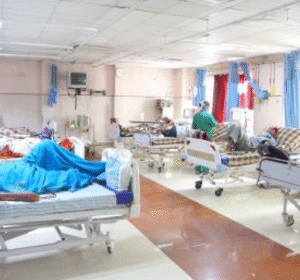1. Introduction to Multiple Joint Pain
Experiencing pain in multiple joints without swelling can be concerning and may indicate an underlying health issue. Understanding the symptoms and potential causes of this type of pain is essential for proper diagnosis and treatment.
2. Symptoms of Multiple Joint Pain
The primary symptom of multiple joint pain is discomfort or aching in two or more joints throughout the body. This pain may vary in intensity and can be constant or intermittent. Unlike arthritis-related joint pain, there may be no visible swelling or redness.
3. Causes of Multiple Joint Pain
Several factors can contribute to multiple joint pain without swelling. These include inflammatory conditions like fibromyalgia, autoimmune diseases such as lupus or rheumatoid arthritis, infections like Lyme disease or viral illnesses, and metabolic disorders like gout or hypothyroidism.
4. Fibromyalgia
Fibromyalgia is a chronic condition characterized by widespread musculoskeletal pain, fatigue, and tender points throughout the body. Joint pain in fibromyalgia is often accompanied by other symptoms like sleep disturbances, mood changes, and cognitive difficulties.
5. Autoimmune Diseases
Autoimmune diseases like lupus and rheumatoid arthritis can cause joint pain without significant swelling. In these conditions, the body’s immune system mistakenly attacks healthy tissues, leading to inflammation and pain in multiple joints.
6. Infectious Causes
Infections such as Lyme disease, viral illnesses like influenza or hepatitis, and bacterial infections can trigger joint pain as part of the body’s immune response. In some cases, joint pain may be the primary symptom of the underlying infection.
7. Metabolic Disorders
Metabolic disorders like gout, characterized by the buildup of uric acid crystals in the joints, can cause sudden and severe joint pain. Hypothyroidism, a condition where the thyroid gland produces insufficient hormones, can also lead to joint stiffness and discomfort.
8. Overuse or Injury
Repetitive movements, overuse of joints, or previous injuries can contribute to chronic joint pain without swelling. Conditions like tendonitis or bursitis may cause localized pain in multiple joints, especially with repetitive activities or improper biomechanics.
9. Stress and Anxiety
Psychological factors such as stress, anxiety, or depression can manifest as physical symptoms, including widespread joint pain. Chronic stress may contribute to muscle tension and exacerbate underlying conditions like fibromyalgia or arthritis.
10. Medication Side Effects
Certain medications, including some antibiotics, cholesterol-lowering drugs, and chemotherapy agents, may cause joint pain as a side effect. It’s essential to discuss any new or worsening symptoms with a healthcare provider to evaluate potential medication-related causes.
11. Hormonal Changes
Hormonal fluctuations, such as those experienced during menopause or pregnancy, can affect joint health and contribute to pain. Estrogen levels, in particular, play a role in maintaining joint function and may influence symptoms of joint pain.
12. Nutritional Deficiencies
Deficiencies in essential nutrients like vitamin D, calcium, or magnesium can impact joint health and contribute to pain. Adequate nutrition is crucial for maintaining healthy bones and joints, and addressing deficiencies may alleviate symptoms.
13. Environmental Factors
Exposure to environmental pollutants, allergens, or toxins may trigger inflammatory responses in the body, leading to joint pain and discomfort. Identifying and avoiding potential triggers can help manage symptoms in individuals sensitive to environmental factors.
14. Genetic Predisposition
Some individuals may have a genetic predisposition to conditions associated with joint pain, such as rheumatoid arthritis or psoriatic arthritis. Family history and genetic testing may provide insights into the likelihood of developing these conditions.
15. Age-Related Changes
As we age, changes in joint structure and function, including cartilage degeneration and decreased lubrication, can lead to joint pain and stiffness. Maintaining a healthy lifestyle, including regular exercise and weight management, can help mitigate age-related joint issues.
16. Occupational Factors
Occupations that involve repetitive motions, heavy lifting, or prolonged standing may increase the risk of joint pain and musculoskeletal disorders. Proper ergonomics, frequent breaks, and ergonomic modifications can help reduce the risk of work-related joint pain.
17. Lifestyle Choices
Unhealthy lifestyle habits such as smoking, excessive alcohol consumption, poor diet, and lack of exercise can contribute to joint pain and inflammation. Adopting a healthy lifestyle, including regular physical activity and a balanced diet, can support joint health and reduce pain.
18. Psychological Factors
Psychological factors like stress, anxiety, or depression can influence pain perception and exacerbate symptoms of joint pain. Mind-body techniques such as relaxation exercises, mindfulness meditation, and cognitive-behavioral therapy may help manage pain.
19. Environmental Factors
Exposure to environmental pollutants, allergens, or toxins may trigger inflammatory responses in the body, leading to joint pain and discomfort. Identifying and avoiding potential triggers can help manage symptoms in individuals sensitive to environmental factors.
20. Diagnostic Evaluation
Diagnosing the underlying cause of multiple joint pain without swelling typically involves a comprehensive medical history, physical examination, laboratory tests (such as blood tests or imaging studies), and possibly consultation with specialists like rheumatologists or infectious disease experts.
21. Treatment Approaches
Treatment for multiple joint pain depends on the underlying cause and may include medications (such as pain relievers, anti-inflammatories, or disease-modifying drugs), physical therapy, lifestyle modifications, stress management techniques, and complementary therapies like acupuncture or massage.
22. Pain Management Strategies
In addition to addressing the underlying cause, pain management strategies such as heat or cold therapy, gentle exercise, stretching, and relaxation techniques can help alleviate joint pain and improve quality of life.
23. Lifestyle Modifications
Making lifestyle changes such as maintaining a healthy weight, exercising regularly, practicing good posture, avoiding excessive joint strain, and managing stress can help prevent or reduce joint pain and promote overall well-being.
24. Collaboration with Healthcare Providers
Working closely with healthcare providers, including primary care physicians, rheumatologists, physical therapists, and other specialists, is essential for accurate diagnosis and effective management of multiple joint pain without swelling.
25. Seeking Medical Attention
If you experience persistent or severe joint pain, it’s important to seek medical attention promptly. A healthcare provider can help determine the underlying cause of your symptoms and develop a personalized treatment plan to address your needs and improve your quality of life.





